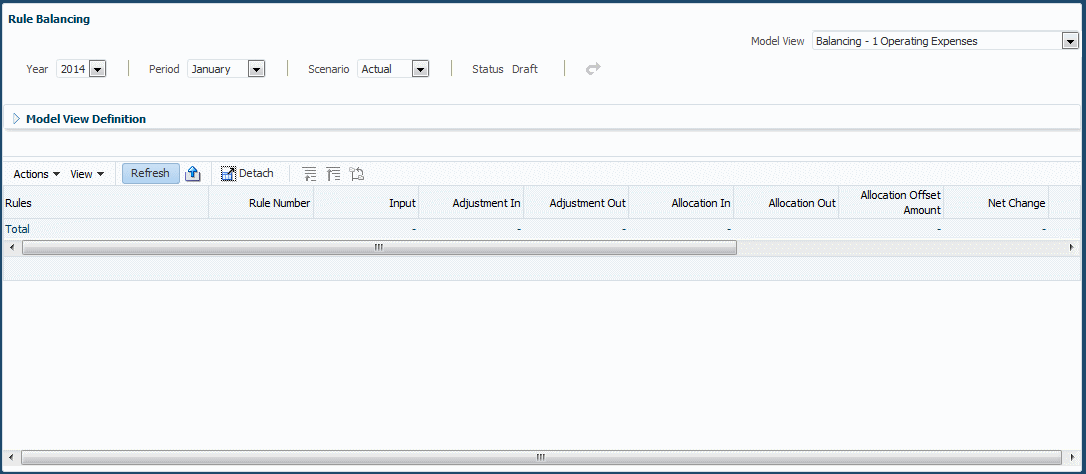About Rule Balancing
Rule balancing can help you validate applications.
-
Calculation results validation — Following a calculation, you can validate the results by reviewing calculation results for individual rules, reviewing the impacts of those rules, and evaluating the effect of all rules on a particular slice of the database. You can verify that the calculations are producing expected results and also determine if the collection of rules is affecting the database slice as expected.
-
Contribution analysis and trace — Using the same screen and isolating a segment of the database, you can evaluate the balances at that segment and how the rules contributed to the final result. Then, you can use this information to relate final results to individual rules to trace the effects of application logic on the final allocation results.
To display rule balancing data, calculate the application and then follow these steps:
